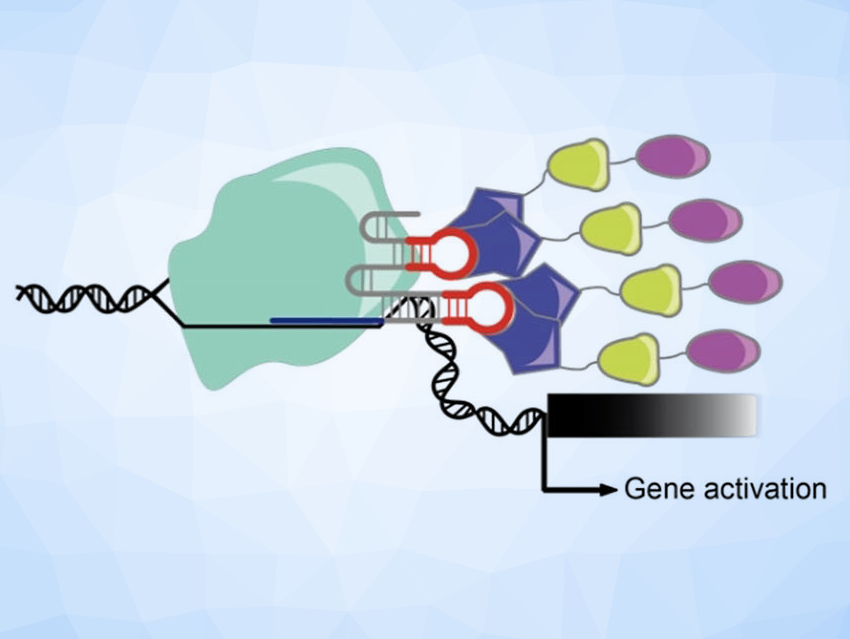Cells are highly structured systems in which genetic programs direct survival and interaction with the environment. Tools that allow researchers to turn these genetic programs on and off non-invasively and precisely are useful. Such tools should be small in size and versatile, and they should respond in a digital on/off fashion.
Günter Mayer, University of Bonn, Germany, and colleagues have developed a variation of the CRISPR/dCAS9 system for the light‐controlled activation of gene expression. The team used a complex of a nuclease-deficient mutant of Cas9, called dCas9, and single guide RNA (sgRNA) as a programmable genetic navigation platform. The researchers extended the sgRNA with aptamer 53, which only binds the light-conformation of the photoresponsive protein PAL (pictured in blue). Aptamers are oligonucleotides that bind to a specific target molecule. PAL was fused to activator domains called p65 and HSF1 (pictured in yellow and purple), which induce gene expression when near the gene of interest.
In HeLa cells with these components, the team observed a reversible light-dependent activation of the expression of a targeted gene. The system activates gene expression under light, with almost no residual activity in the dark. Overall, it enables the reversible control of gene transcription using a light-dependent protein-aptamer interaction.

- Aptamer‐Mediated Reversible Transactivation of Gene Expression by Light,
Christian Renzl, Ankana Kakoti, Günter Mayer,
Angew. Chem. Int. Ed. 2020.
https://doi.org/10.1002/anie.202009240




